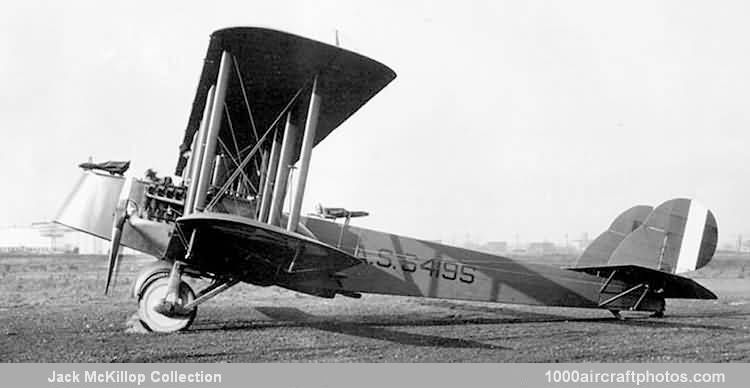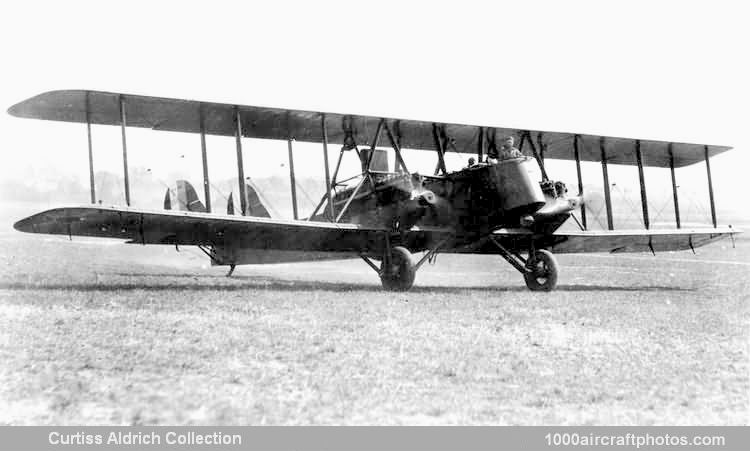01/31/2008. Remarks by
Jack McKillop: "The Martin Model MB-2 NBS-1 was an improved version of the Martin Model MB-1 GMB. The famed American aviator Brigadier General William L. "Billy" Mitchell, Assistant Chief of the USAAS, was enthusiastic about the GMB, the first American designed bomber, and in 1920, the USAAS ordered 20 improved GMBs designated by their Martin model number, MB-2. The improvements to the GMB, many suggested by General Mitchell, included replacing the four-wheel landing gear of the GMB with two 44-in (112 cm) wheels allowing an internal bomb-bay, removing fuel tanks from the fuselage, streamlining engine nacelles and increasing the wing span and incorporating hinges allowing the wings to be folded backwards for easier storage.
The first five aircraft were delivered as Martin MB-2s but the last 15 were given the designation NBS-1 (Night Bombardment - Short Distance) in the new USAAS designation system; the first five were redesignated NBS-1 in 1921. The NBS-1 was such a success that the USAAS wanted 110 more but as mandated by the Congress, the Army was required to ask for bids on the additional aircraft.
The lowest bid was by the Curtiss Aeroplane and Motor Company of Garden City, New York, which priced their aircraft US$6,000 (US$69,500 in 2007 dollars) less per plane than Martin so Curiss got the contract for 50 NBS-1s. A second contract for 35 aircraft was awarded to the LWF Engineering Corporation of College Point, New York; four of these aircraft had dual controls for training. The last 20 Curtiss machines had turbo-superchargers while LWFs first NBS-1 was sent to the Aeromarine Plane and Motor Company of Keyport, New Jersey, and used as a pilot model for 20 NBS-1s built by that company.
(68482
"P-254") (
Gordon Hubbard Collection) APS No. 764
A total of five NBS-1s, all produced by Curtiss, were allotted McCook Field Project Numbers:


